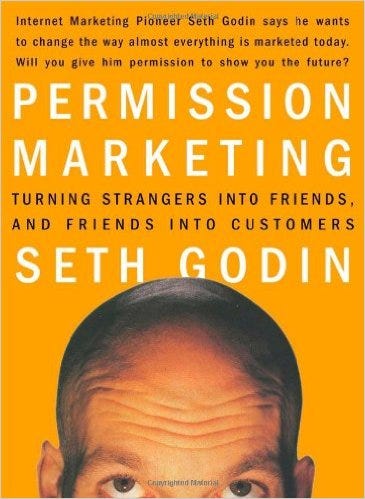Learn how to market more effectively by taking into account customer’s self-interest

Interruptive marketing has lost its effectiveness
Interruptive marketing is the classic, intrusional method of marketing where people are interrupted with ads, whether on television, on the radio, printed ads, among others. Initially, this for of ads was very effective. Companies increased their sales dramatically using interruptive marketing.
But then, once every bigger company used this method they overdid it. People became so overflooded with ads that they virtually stopped paying attention to them. This shift made it very hard for Marketers to catch the attention of people. Interruptive marketing became a highly competitive advertising method with little return.
Permissive Marketing consists of consumers volunteering
While interruptive marketing floods customers without any consideration of their consent, permissive marketing empowers the customer by giving them a choice. In permissive marketing, customers have the choice to opt out or to find out more about the product.
The first successful permissive marketing campaign consisted in a radio advertisement where parents were invited to call a hotline to find out more about the company’s service to improve reading skills of children. Playing an active role — having the choice to ignore or accept the message — makes people more likely to pay attention to the ad.
Appealing to customers self-interest
Although permissive marketing is more focused and less interruptive than interruptive marketing, some interruption still has to happen.
It is crucial then that the add offers something of value to the customer. Customers don’t act to do your company a favor they act in self-interest. So to make them interested in your product, you have to offer them something of value first.
Lastly, the message has to be frequently repeated. A targeted, frequent ad is much more likely to attract customers as the frequency makes up for ignoring or forgetful people.
Permission marketing is more targeted and cost efficient
Being more targeted has two implications. Frist the cost is reduced, instead of flooding people with ads they are likely not interested in, people are targeted with ads which they are likely to be interested in. Airlines, for instance, can encourage customers to stay loyal to their airline by offering them bonus points for free travel. In exchange, they can offer customers targeted ads.
Online retailer like Amazon make great use of targeted ads. Amazon stores all of its customer’s activities and thus can target specific ads they are likely to be interested in.
Targeting ads not only reduces cost, it also makes it more likely that customers commit to buy the products, thus resulting in a bigger return for the money invested in advertising (ROI).
Building up a customer relationship is important
People are unlikely to become customers of a company they don’t know and therefore don’t trust. That’s why it is much better to build up a relationship first. Permission marketing focuses on first offering value, slowly and gradually building up a trust relationship, often in multiple stages.
When finally the product is offered, customers often have a good level of trust and confidence in the company and product which makes it more likely that they commit to the purchase.
A solid trust can also bring customers to pay in advance for a product. This could be a singular upcoming product or a subscription to a product or service. In both cases, the customer trusts that the company will deliver good value.
The internet promotes permission marketing
Permission marketing stems from a century ago where businesses had to rely on word-of-mouth to attract new customers. Once the aggressive interruptive marketing strategy became ineffective in the second half of the twentieth century, however, a resurgence of permissive marketing happened.
Another important factor contributed to the rise of permission marketing, the advent of cheap two-way communication platforms, the biggest facilitator of which was the Internet. The Internet offers an easy, cheap and ubiquitous way to establish a dialog with customers.
